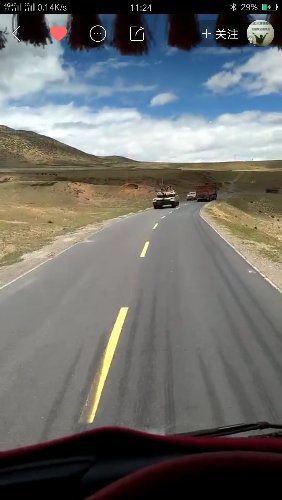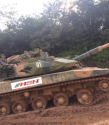Um. I did say it looks far better protected. Implying I don't know for sure. Now reason I say this is because it uses the same ztz-99/ leopard 2a5+ wedge add on that supports some form of reactive armour. This is easy and cheaper to replace than fixing up the entire section of armour damaged by anti-tank munitions. Underneath this wedge bracket (this means it is not a shot trap unlike what some actual idiots think) lies the armour that contains the plates of ceramic etc. We've all seen the cross sections and diagrams. Chobham and Dorchester is ancient technology that everyone now has at least caught up on if not exceeded. Whenever an Abrams is severely damaged, the vehicle is mission killed and requires the entire front section to be replaced which is exceptionally difficult and costly even for superficial damage. Having a modular design like Leopard 2a5+, Leclerc, T-80x, T-84x, T-90x, and Type 96x/99x is FAR superior to Challenger 2 and Abrams approach to armour. For the same weight at least. Of course this is only referring to head on frontal arc. Chinese tanks have been quite weak in the angled frontal arc and abysmal pretty much everywhere else but the decision to do this is to focus all the weight of armour of statistically most likely place to get hit while keeping that section as tough if not tougher than the hardiest tanks and still keeping weight down. Now this ZTQ approach I think looks better than VT-5's which follows the ancient Abrams/ Challenger method. At least seems to. I haven't looked into VT-5.
What makes you think VT-5 is the perfect design for scaling up? What makes it "modern" looking? Russian method of improving protection while keeping weight down (much much MUCH more important that protection) is actually the more modern solution. Abrams, VT-5 etc are not much different to cold war era solutions albeit with far more sophisticated materials. Sophisticated materials is NOT limited to using this method of turret design.





